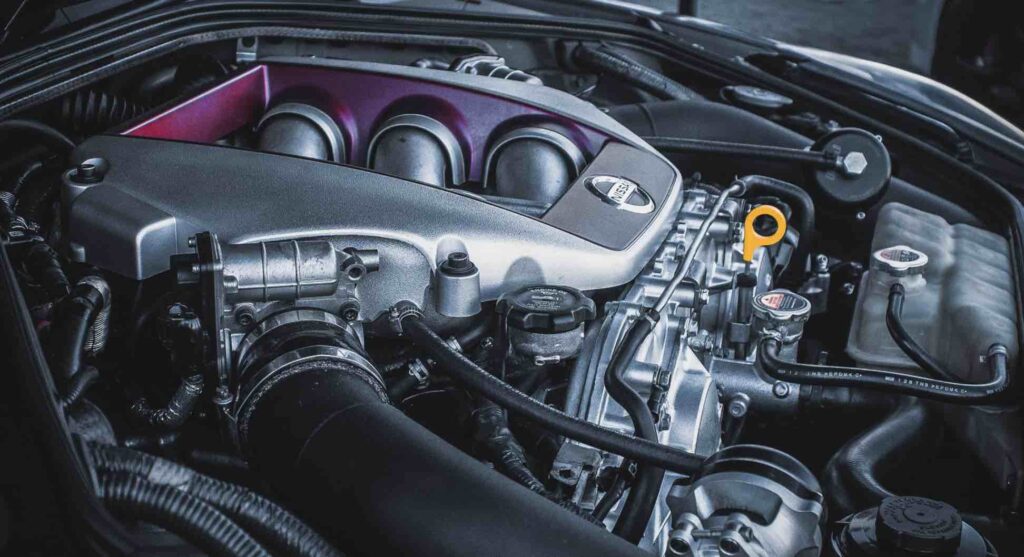Last updated on July 16th, 2023 at 02:59 pm
The engine’s lifeblood is dependent on quality motor oil. Learn how to check your oil like a pro to obtain the best engine performance and lifetime. And while paying attention to the details is important, the following step-by-step summary includes some of them.
do you check the oil with the car running
It is advisable to check the oil when the car is running instead, you should check the oil level before starting your car engine. Or you can check the oil around 5 to 10 minutes after shutting the engine down, rather than while the car is running. This will help you get an accurate reading. Check your oil every now and then to make sure your automobile has enough of this important lubricant.
Your owner’s manual will walk you through how to check the oil level. Depending on your vehicle, you may need to go through a multi-step procedure to get an accurate reading.
Read Also: What Are Prices Of Valvoline Oil Change & How long Does Oil Change Last?

Should I Check My Oil When The Engine Is Hot Or Cold?
You necessarily do now have to wait until your engine is cold before you check your engine oil level. You can inspect the oil level when the engine is warm, but not more than 15 minutes after you last started car and turn it off. This is due to the amount of time it takes for the oil to drain into the pan.
When the engine oil cools and is poured into the oil pan, it will move past the max sign if you check it shortly after driving the car and fill it to the max sign. The ideal circumstance is to drive your car warm and let it stand for 15 minutes before checking the engine oil since it will both be warm and all oil will have poured down into the oil pan.
How To Read Oil Level On Dipstick?
First, remove the dipstick and clean it. You will have to put it in again. You then take it out a second time to examine it closely. The dipstick on your vehicle should include holes, letters, or lines that indicate the oil level in the engine.
where should oil be on dipstick
The oil level will either be around F (Full) or L (low) (those are the common symbols for some automobiles). Others mark these locations with two (or more) little holes or a series of lines. You’d have to re-read the owner’s manual to confirm what it says regarding the markers on the oil dipstick.
Suppose the oil is between these markings (the closer to the top, the better), then we could say the oil level is just right. However, if the oil is close to or below the indications at the end of the dipstick’s tip, you should add more engine oil.
No Oil On Dipstick
Markings should be used to indicate oil levels (Some dipsticks have holes instead of marks). If the oil does not reach the dipstick lines or holes, add one quart of oil. If the dipstick does not display an oil level, you must immediately add oil.
Car engines cannot function without engine oil, which keeps the engine operating smoothly. Engine oil aims to generate a layer that prevents friction between moving parts and keeps the engine operating smoothly.
A low engine oil level is a common reason why there is no oil on the dipstick when you check it. There are a malfunction somewhere, major oil spills, or losses. Sometimes the dipstick might not reach the bottom; in the case where the engine still has oil in the pan, the dipstick will misses it.

How To Check Engine Oil Level
Check that your vehicle is level and that the engine is turned off. The parking brake should be activated, and the transmission should be set to park or lower gear. Lift the hood; the hood-release lever is usually located on the left side of the instrument panel. To learn how to check an oil dipstick, follow the steps below.
Step one: Track down the Dipstick.
Most vehicles have a small colored handle with an oil-can symbol, making it easy to spot.
Step two: Take the Dipstick and pull it out.
Remove the dipstick from its tube. It’s the equivalent of removing a sword from its heath. Wipe any excess oil off the end of the dipstick with a rag or paper towel.
Two lines appear at the tip of the dipstick: the lower one indicates a one-quart low oil level. The top line indicates that the crankcase (oil tank) is full. Words such as “full” and “add” are also written on some dipsticks.
Step three: Observe the Oil Level
Insert the dipstick slowly and firmly into the tube. Remove it and inspect the tip, which should be coated in oil. Your vehicle has enough oil if the oil level is between the two lines. It’s time to add a quart if it’s near or below the low mark.
Step four: Re-check
After pouring a quart of oil, wait several minutes for it to drain down into the crankcase. Next, check the level again to make sure it’s between the high and low levels. For your engine to be adequately lubricated, the oil level does not need to be high.
How Much Oil Should Be On The Dipstick?
It should be fine when you park your car on flat terrain, and the oil-wet mark is 1/4 inch higher than the crisscross line region. If the oil level is 1/2″ or 1′′ above the FULL mark, the oil level is excessively high, exceeding the front and back seals of the crankshaft. The oil level should normally be just below the bottom of the crankshaft.
Dipstick Oil Level Too High
What happens when your engine has too much oil? The revolving crankshaft causes air to come into touch with the oil when there is too much oil. While cycling through the operating engine, the oil becomes quite foamy and frothy.
As the oil thickens, there will be several small air pockets. This reduces its flow and ability to circulate through the engine’s components at the necessary speed to keep it cool.
The air could contain microscopic particles and debris, which are subsequently introduced into the oil. This signifies that the oil has become polluted, and its ability to lubricate the engine has decreased. If the engine’s components aren’t properly oiled, the engine will overheat.
Faq:
Do You Check Your Oil With The Car Running?
It’s better to check the oil level when your car is off. Before checking the oil level, let the engine cool for 10 to 15 minutes after shutting it off. To acquire the most accurate reading, park your automobile on level ground.
Does It Matter What Oil I Put In My Car?
So really, does it matter what oil you put in your car? Well, yes, you should always use synthetic oil in your engine, or at least a combination of synthetic oils. Mineral oil will give you poor performance and fuel economy at best, and it could cause serious harm at worst. Repairing any of the problems caused by cheap oil is significantly more expensive than sticking to a synthetic blend or synthetic oil.
Conclusion
Regularly checking and changing the oil is the most critical thing you can do for your engine. Make that it is completed correctly and on schedule. You’ll not only get the care and attention your engine requires, but you’ll also gain a peice of mind and a smooth-running engine.
Related Articles:

Hi dear, my name is Jeffery Ekweghi, and I am a certified mechanic and autobody parts technician. I created this site to share my expertise and experience with car lovers looking to resolve their car-related issues. I am certified in private cars and heavy-duty commercial vehicles. I have worked as a mechanic since 2015 and have experience in vehicle brands like Subaru, Jeep, Toyota, TATA, BMW, Mazda, Honda, Nissan, Kia, TVs, and Others; however, I primarily specialize in Toyota vehicles.












